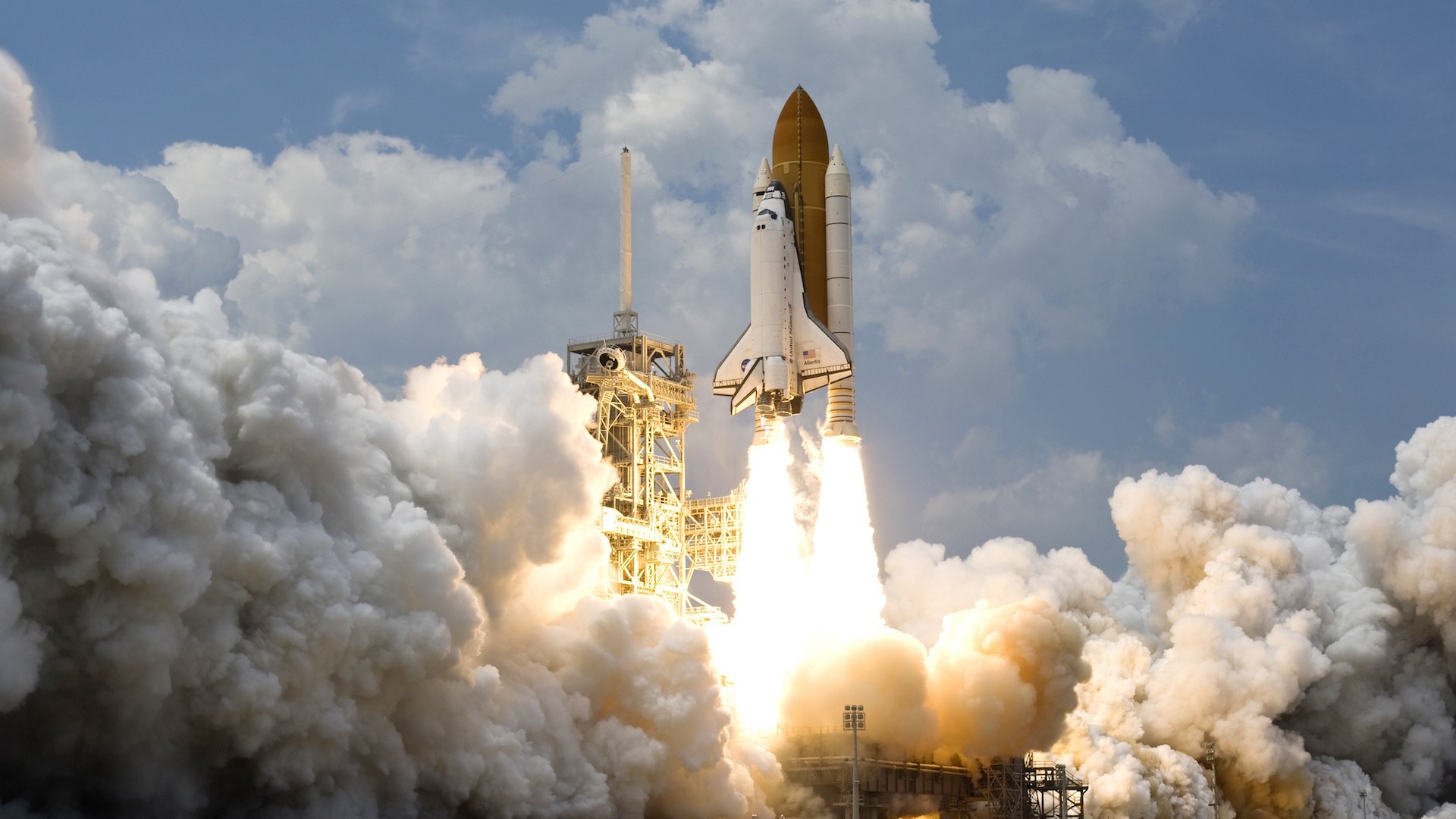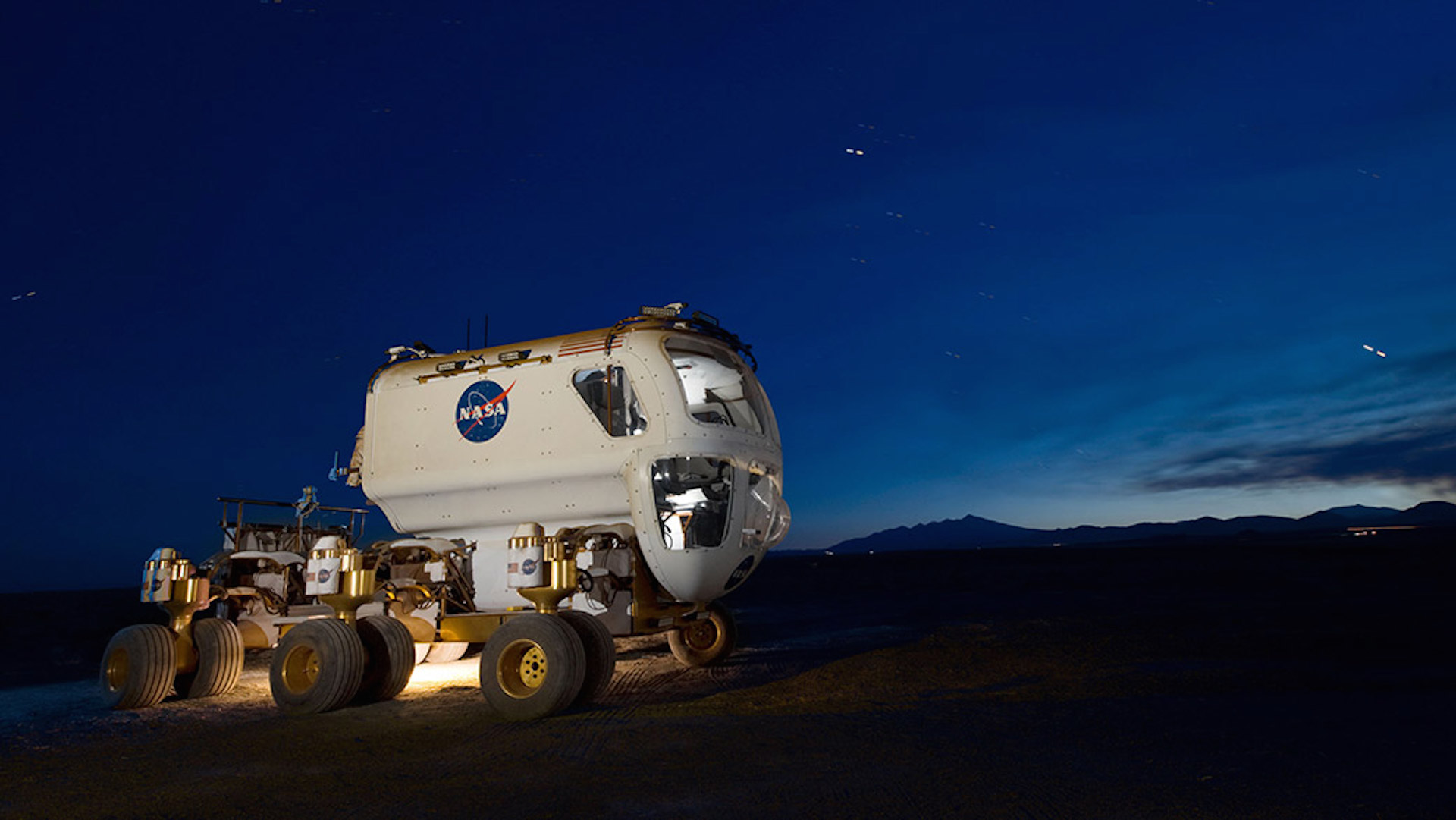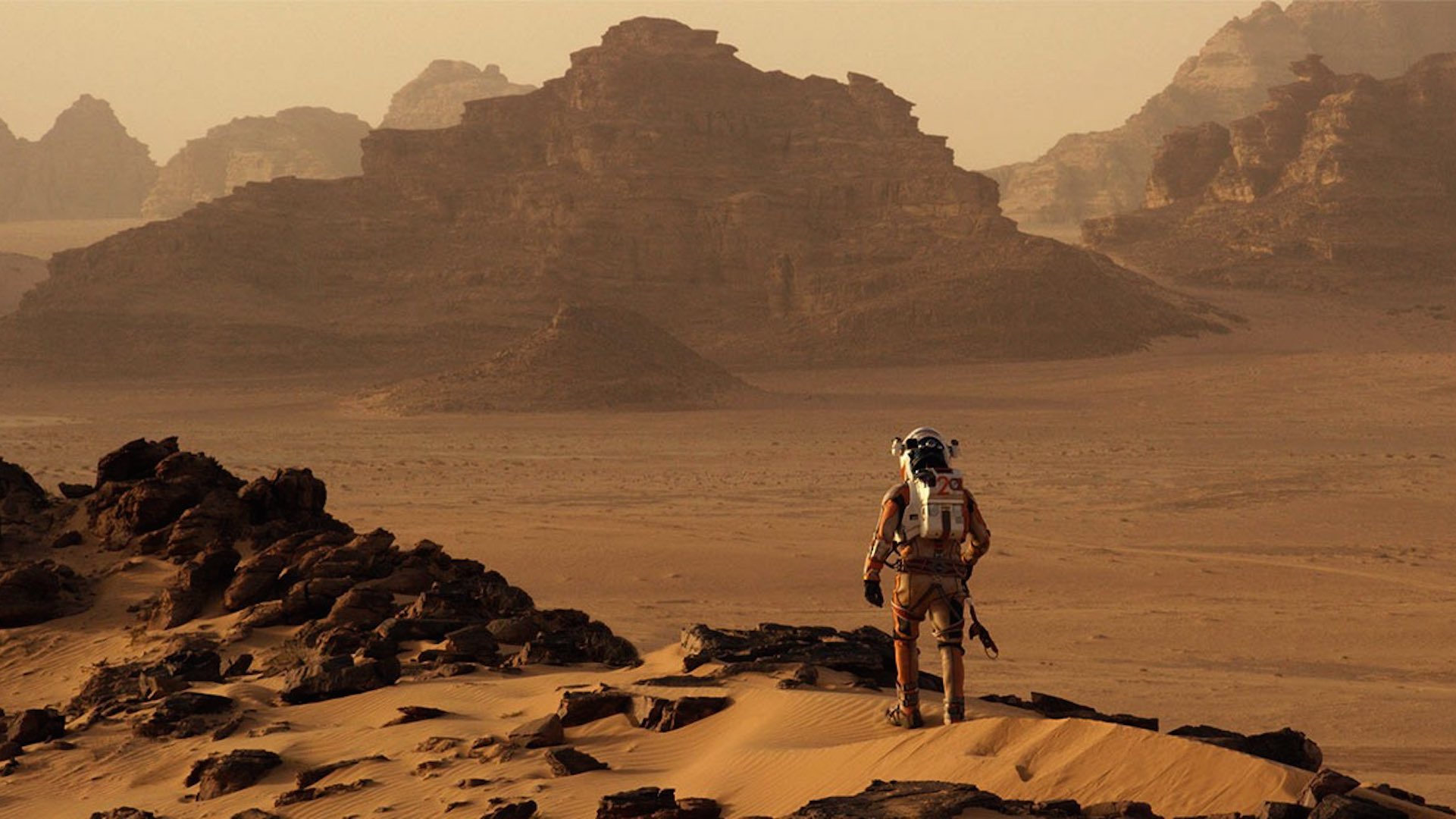What Does It Realistically Take to Live on Mars?
A scientist and a future Martian discuss how humans can one day live on the Red Planet.
in partnership with
Since the 19th century, writers, filmmakers and musicians have fantasised about moving to Mars. And now, space agencies all over the world are working furiously to make it happen, though none has a 100% firm plan of action yet. After all, Mars isn't the friendliest place: the air is almost oxygen-free, temperatures swing from -150 to 20 degrees celsius and the winds are fierce. Despite that — and the prospect of never returning home — thousands of people applied to join Mars One, a Dutch non-profit hoping to send four travellers on a one-way mission to Mars in 2031. Meanwhile, NASA has its sights set on putting humans into orbit by the 2030s and on the surface by the 2040s.
With Sydney Science Festival kicking off on August 8, we thought it the perfect time to dive into the possibility of one day colonising the Red Planet. So, we put our lab coats on and tracked down some of the people working to make this interplanetary dream a reality. Here, we chat with Josh Richards, one of 100 short-listed candidates for Mars One, and Dr Mitch Schulte, a scientist working on NASA's 2020 rover mission, about what living on Mars might involve.

GETTING THERE
Before stepping foot on the Red Planet, before testing the environment, before figuring out how to make Mars home, the first obstacle for the next giant leap for mankind is getting there. So far, two-thirds of all spacecrafts to have tried have failed. Mars's atmosphere is 100 times thinner than Earth's, which means that when a rocket enters, it takes much longer to slow down, making a crash landing a major risk. In addition, monstrous dust storms howl across the planet's surface, which is covered in hazardous rocks.
That said, seven spacecrafts have made it successfully — all free of people, however — and right now, two rovers, Opportunity and Curiosity, are up there roaming around. "The rovers travel by direct trajectory. We send them directly from Earth to arrive at a particular spot," says Dr Schulte. "That requires going from 35,000 miles an hour when the rover hits the atmosphere to 0 miles at the surface. We slow them down with hypersonic parachutes, which open at incredibly fast speeds... When you send humans into orbit, you have to use rockets to slow them down, so that gravity captures the spacecraft." So, the trick now is figuring out how to slow humans down safely. "After we've successfully accomplished that and brought people back, we can think about putting them on the ground, as happened with the moon missions."

NASA.
BREATHING
When or if anyone does manage to land on Mars in one piece, the next challenge will be breathing. The air is made up of 96% carbon dioxide and 0.2% oxygen, as opposed to ours which contains 21% oxygen. To live on the Red Planet permanently, we'd need to develop the technology to do some serious harvesting and storing. "One of the goals of the 2020 mission is to demonstrate an instrument that could extract oxygen from the atmosphere, but it would be used primarily for propellant grade oxygen for rocket fuel," says Dr Schulte. "At this stage, any human travelling to Mars would have to take all the air they need with them."
Should things go as planned for Mars One, there'll be rovers capable of extracting oxygen from Mars's rocks and atmosphere by the 2020s. With this technology in place, the rovers will head up in advance of the crew, ensuring hundreds of litres of breathable air are ready to go.

Twentieth Century Fox/The Martian.
SETTING UP DIGS
The first humans on Mars won't be spending much time outside. Mars One's idea is to have them living in inflatable pods similar to the BEAM module currently attached to the International Space Station but much bigger. Two of these pods are currently in orbit, having their resilience tested. "Each is fifty metres long; they look like big, white caterpillars," Richards says. "The first crew [on Mars] will be four people... [though] for the first two years, they won't be going out very much, unless it's critical." Richards explains how the team will operate similarly to winter crews in Antarctica. And as with the oxygen extraction technology, rovers will travel in advance to also bring and set up modules that'll provide spare parts and life support systems, like the SpaceX Dragon Capsule, explains Richards.
Meanwhile, one of NASA 2020's goals is to deepen our meteorological understanding. "We'll be flying a weather package," says Dr Schulte. "It's a set of instruments to measure temperature, pressure, relative humidity, wind speeds and ultra violet radiation levels." Knowing more about these conditions will help set up a proper living environment for the future.

Twentieth Century Fox/The Martian.
EATING OFF THE LAND (EVENTUALLY)
Some will rejoice, some will mourn, but it looks like life on Mars will be more than just vegan-friendly; once a food system has been set up, life will be vegan only. "We'll land with six years' worth of food," says Richards. "Then, we'll start growing food as quickly as we can, which means setting up greenhouses and, essentially, going vegan, which for me is a terrifying thought... It's the worst thing about going to Mars."
Mars will understandably be a pretty sustainable place as well, where even human waste will be reprocessed and used as a resource. "There's an old saying on the International Space Station," Richards tells, "'Yesterday's coffee is today's coffee is tomorrow's coffee'. What you pee out gets cleaned, filtered and put back into the water supply."

LIVING WITH LOW GRAVITY
"The gravity on Mars is about 35% what it is on Earth," says Dr Schulte. If you've ever watched the moon landing, you'll know reduced gravity can make for some bouncy fun — though the Moon is a bit bouncier than Mars, with gravity about 15% what it is on Earth — but no one's sure of the long-term effects on the body. Astronauts living on the International Space Station, which is gravity-free, have noticed their spines lengthening and, if they don't exercise regularly, muscular atrophy.
Richards says that a big part of each day will be spent testing and measuring bone density and muscle strength, to find out how he and the crew are faring. (He's also planning to pack a Kindle loaded with novels and his ukulele.) Plus, if all goes well, the team will be prepping for the arrival of the second crew, who'll set off two years after the first Mars One mission.

Twentieth Century Fox/The Martian.
MEETING THE NEIGHBOURS
Finally, of course, there's the question of whether or not Mars is already taken. "The bottom line is, we don't know if life exists — or did exist — on Mars, but we do know it's geologically and geochemically similar to Earth," says Dr Schulte. "There are environments that indicate there was liquid water near the surface and that [there are] the kinds of rocks from which organisms could extract chemical energy.
"The problem now, though, is that the surface is very dry and liquid water is not stable there, so it exists as ice or gas. If life were to exist now, it would have to be underground, where pressures and temperatures would be high enough — at least as far as we understand how life exists here on Earth."
Could we see the colonisation of Mars in our lifetime? Time will only tell, but with the ferocity in approach and devotion to the cause by the likes of Mars One, NASA and others, it looks like a strong potential to us.
Hear more about what life on Mars could be like from Dr Mitch Schulte at Life on Mars: The 2020 Rover Mission and from Josh Richards at Becoming Martian, both at Sydney Science Festival this month.







